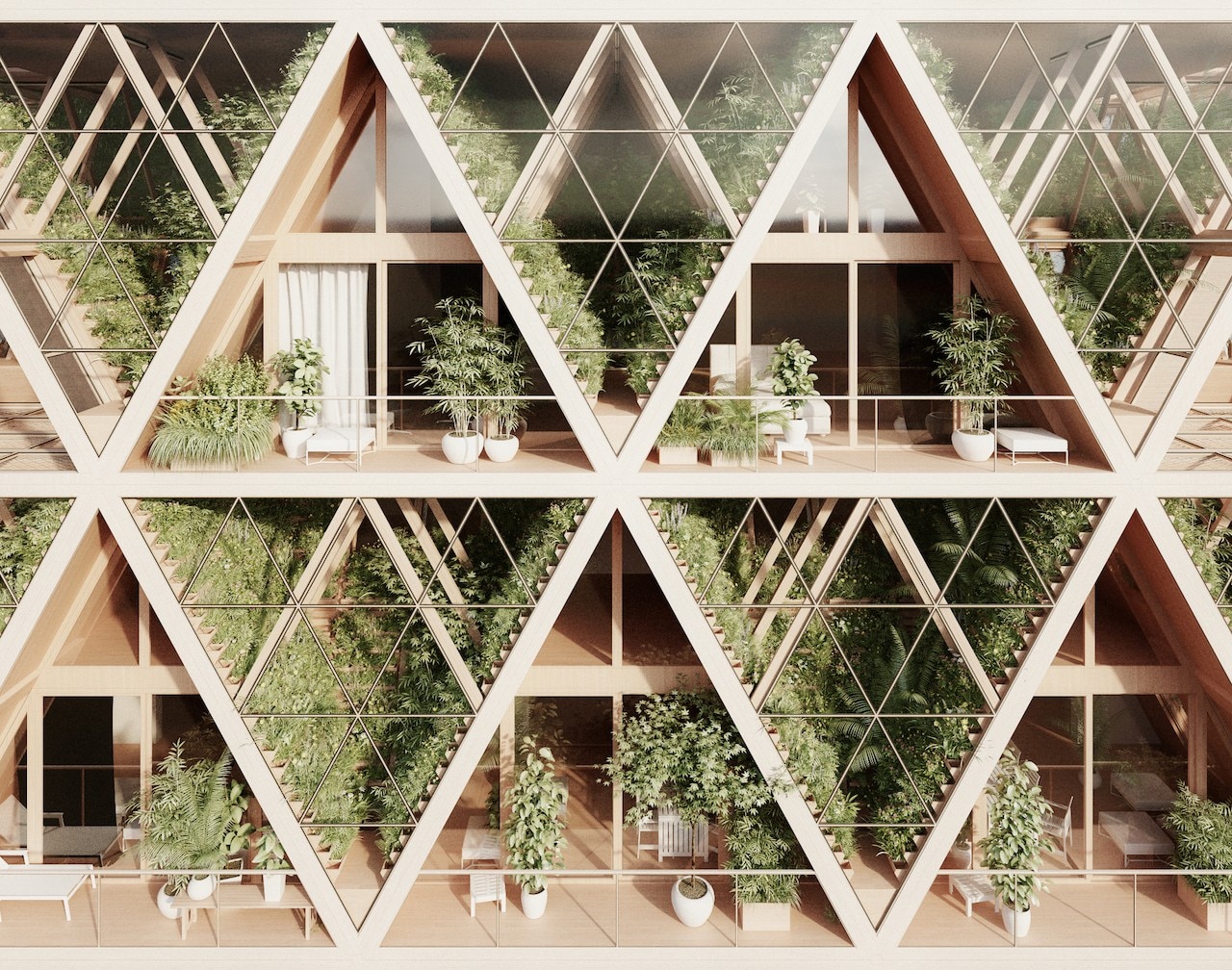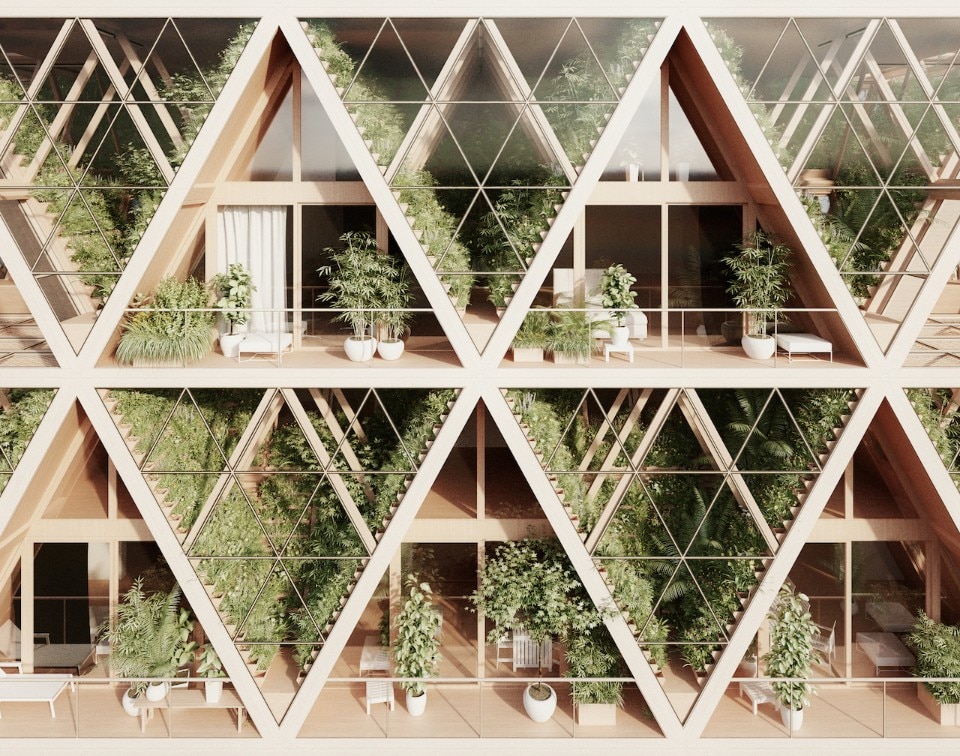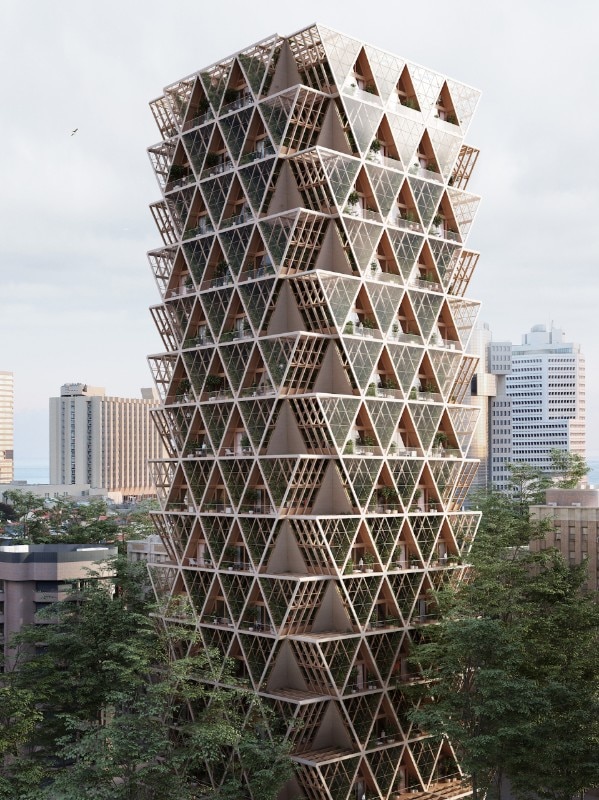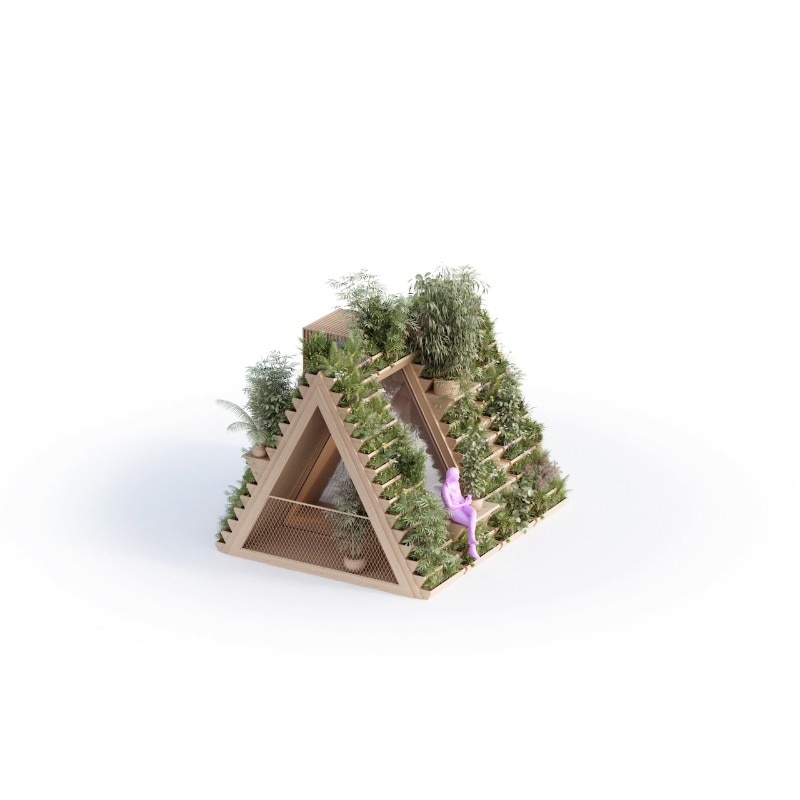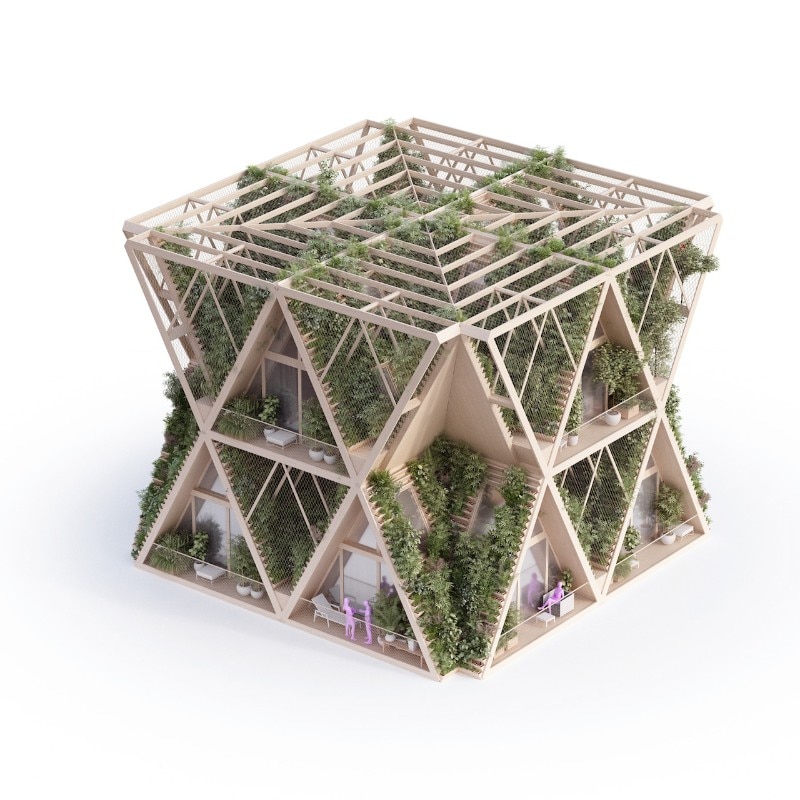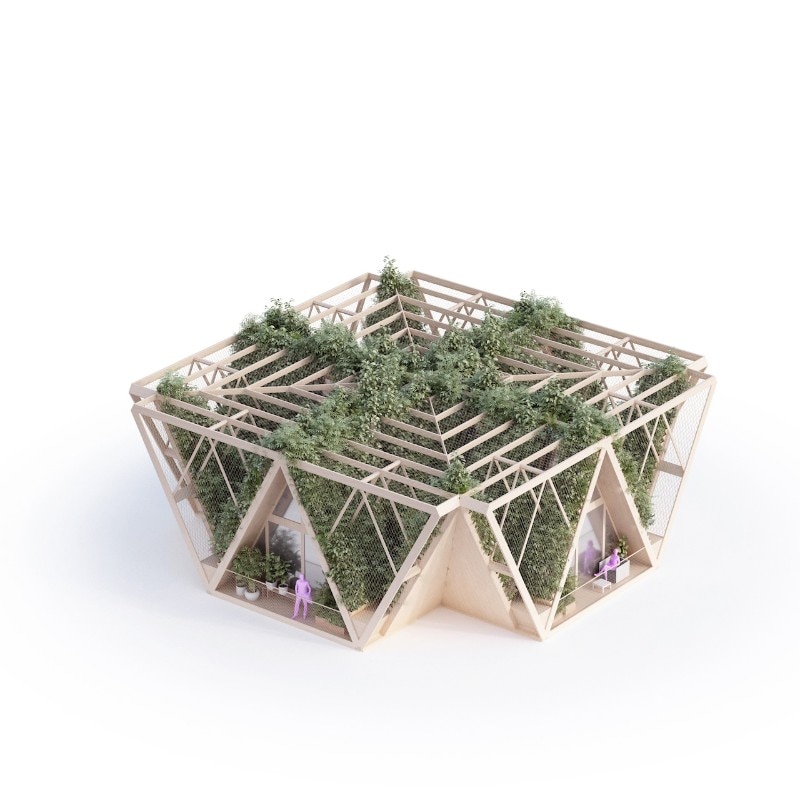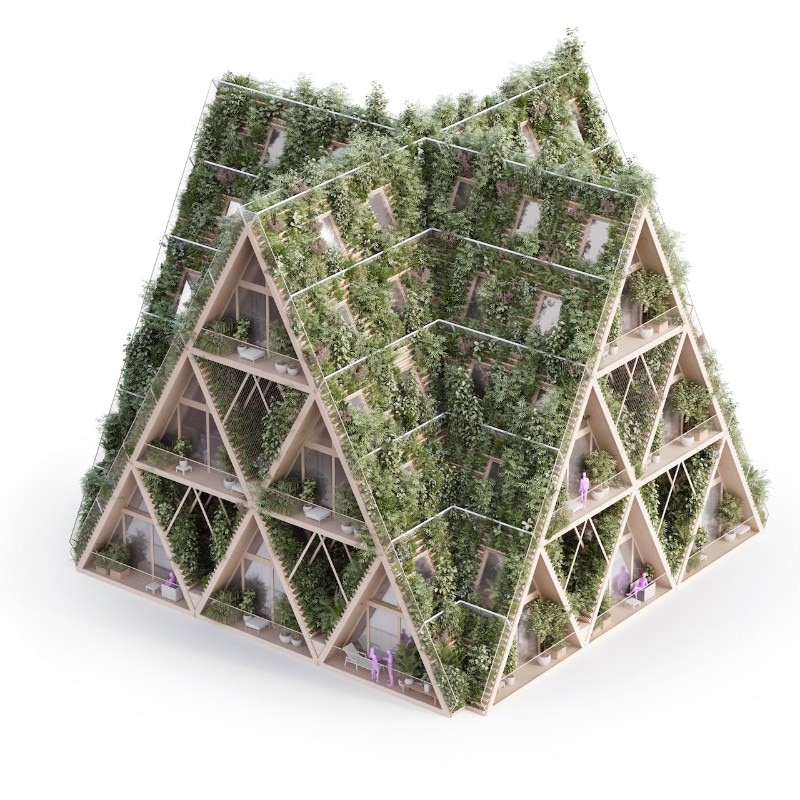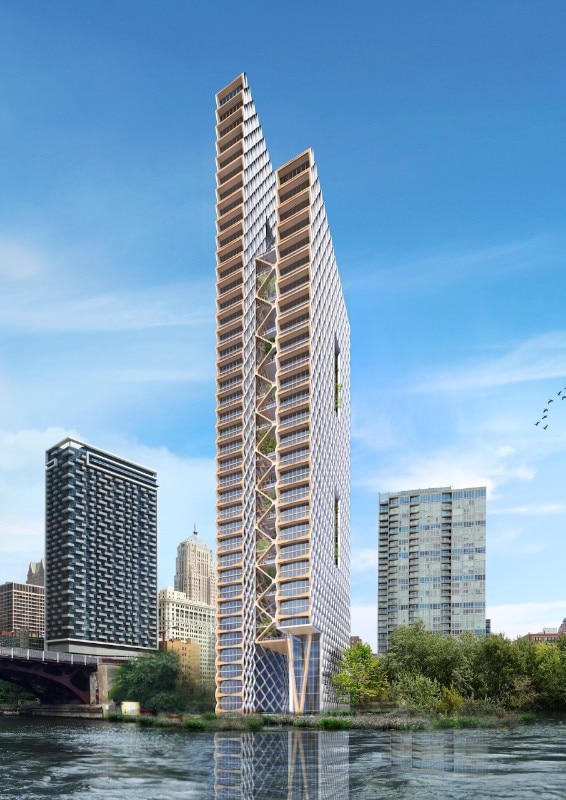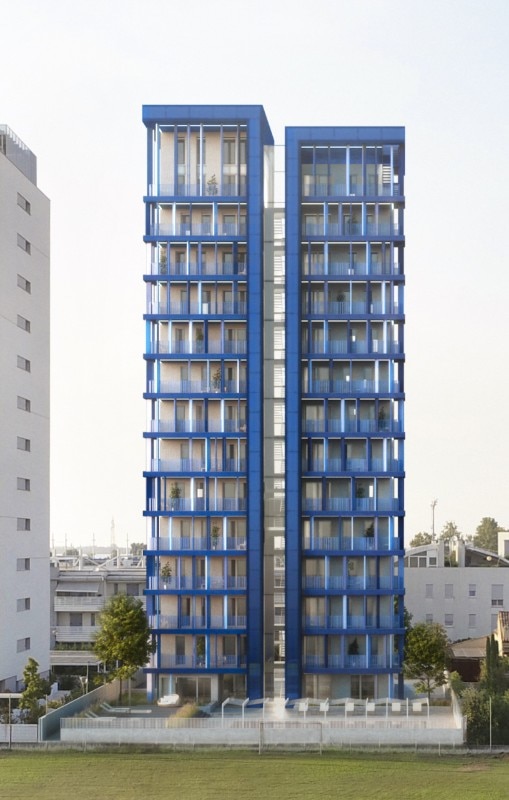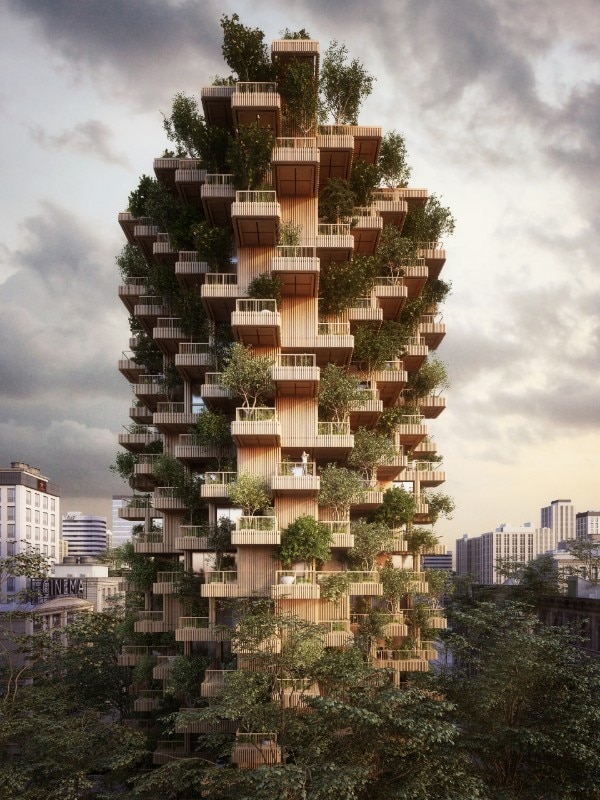This article was originally published on Domus 1040, November 2019
Climate change is a global challenge that has to be addressed from multiple angles by a diverse range of disciplines, and the built environment professions are not exempt. Using concrete as the predominant construction material to densify contemporary cities, the building industry is responsible for over a third of the total carbon emissions in the developed countries of the EU and the United States, and produces a third of the waste worldwide.
In a context in which 3 billion people will demand housing solutions by 2030, the industry will have to provide 300 million units, with 240 million of them in cities where there is a lack of available land and the only affordable solution is high-rise construction.
Therefore, it is crucial to reflect on the environmental impact of construction materials and how to respond to the constant demand for urban infrastructure, and each year for taller structures. The continued use of materials such as concrete and steel to develop the future built environment will result in a catastrophic cycle in which the development of our cities will become the primary source of carbon emissions, thereby inevitably contributing to natural disasters caused by climate change.
Cement production alone – one of concrete’s main ingredients – results from the irreversible release of fossilised carbon stored over millennia in the petrified shells that compose limestone, which are burned at extremely high temperatures, using fossil fuels.
In this context, the ongoing development of construction systems based on timber is a real environmentally sustainable alternative that can respond to the demands for tall structures. Trees absorb carbon while they grow, with the carbon remaining embedded in the timber during its use. Potentially, this timber can be reused and recycled in several products or buildings before it is used as biomass to produce energy, when the same amount of carbon is re-released into the environment, generating a zero-waste and carbon-neutral cycle.
Recent technological innovations in timber engineering products, such as CLT (cross-laminated timber), LVL (laminated veneer lumber) and glulam (glue laminated timber), among others, show the potential for building tall structures in wood.
In a context in which 3 billion people will demand housing solutions by 2030, the industry will have to provide 300 million units, with 240 million of them in cities where there is a lack of available land and the only affordable solution is high-rise construction
Since 2008, the industry has erected more than 50 timber buildings over six stories tall, and building heights have been increasing yearly ever since. This year, the mixed-use HoHo building, with its 24 storeys standing over 70 metres tall, was completed in Vienna. Furthermore, taller developments are planned for the coming years, so it seems that we are just seeing the early possibilities of these construction systems. If this trend continues with approximately the same rate of successful innovations, we will likely see wooden skyscrapers within a couple of decades.
Even though there are no current plans to build a wooden skyscraper, several buildings of up to 80 storeys have been proposed, such as the Trätoppen in Stockholm (40 storeys), the Spar in Portland (48 storeys), the Timber Towers Complex in Philadelphia (62 storeys), the River Beech Tower in Chicago (80 storeys), and the Oakwood Tower in London (80 storeys) . These proposals not only show us how a sustainable built environment might look in the future, but they are also influencing policymakers to consider updating codes to accept even taller wooden buildings.
For instance, the building code of Oregon was modified last year to allow timber structures up to 18 storeys without special consideration, even while the tallest currently built timber building in the state and the country – the Carbon12 – is an 8-storey structure.
Canada has already announced similar changes to their codes, and various countries in Europe are aligned with these measures. Furthermore, the Council on Tall Buildings and Urban Habitat (CTBUH) – which has developed international standards for categorising tall buildings, defining the heights of “tall” (<300 metres), “supertall” (≥300 metres) and “megatall” (≥600 metres) structures – recently included timber as an alternative structural material.
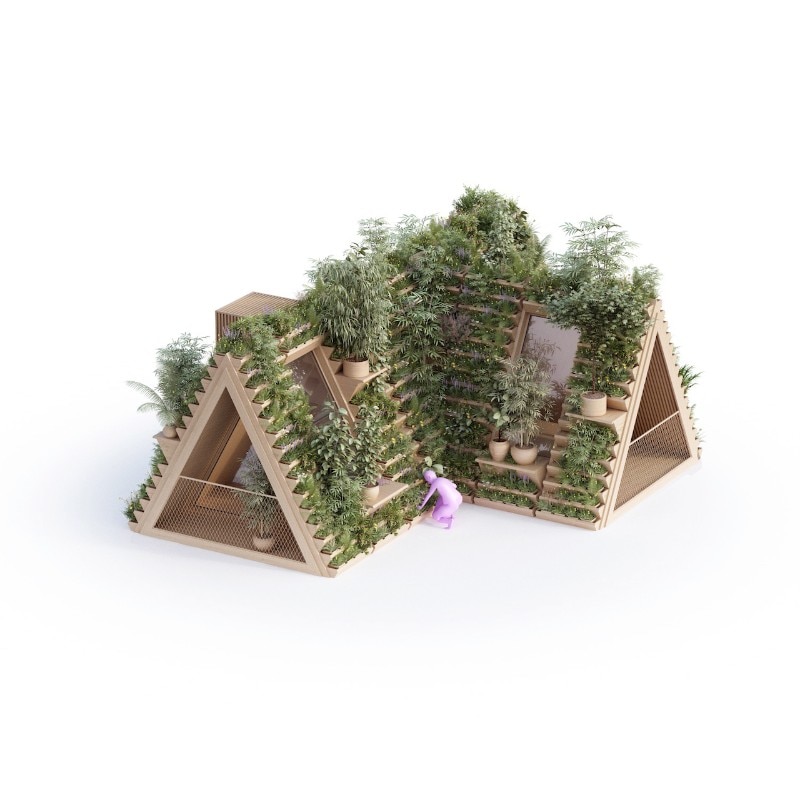
The body also set out guidelines for what constitutes a “timber structure” in projects where a mixture of materials is used. According to these criteria, none of the built projects would be classified as supertall.
However, the W350 – the recent proposal from the Japanese company Sumitomo Forestry Co. – could become the first supertall timber building by 2041. The company announced plans to complete a 350-metre skyscraper for its 350th anniversary, presenting this building as a sustainable precedent for the process of “transforming the city into a forest”.
Considering that current building technology is not capable of achieving this feat, the company has effectively declared an open global long-term environmental challenge, inviting others to pursue the same goal through innovation.
Accomplishing this objective may seem impossible to some people. However, there are similar precedents in the construction industry. From 1885 to 1913, the steel frame industry was able to develop technology to make the leap from 10 to 60 storeys. This technology reached 102 storeys 18 years later when the Empire State Building was completed in 1931. Thanks to the human capacity to innovate when there is a need or purpose, viable inventions can be created from proposals that were beyond the realms of possibility when they were first suggested.
The city can be imagined as an extension of the forest where the timber for supertall buildings is later recycled and reused in other buildings and finally transformed into biomass to provide energy for these developments
Nowadays, the task is not only to make this specific building type structurally feasible and the technology economically cost-efficient, but also to develop a holistic perspective of timber as a construction material. The challenge put forward by Sumitomo Forestry Co. and others with similar objectives aims to increase the demand for wood and therefore necessarily improve forest management and reforestation. Thus, the city can be imagined as an extension of the forest where the timber for supertall buildings is later recycled and reused in other buildings and finally transformed into biomass to provide energy for these developments. At that moment, the CO2 emitted by the burning of biomass can be absorbed by forests, which will, in turn, provide timber for buildings.
The innovation process of the W350 presents a new way for cities to coexist with forests and interact with the environment. Promoting a type of innovation which aims to take from the environment what is later returned to it may also become a practice to be incorporated by other industries.
This way of understanding building materials poses a challenge for built environment professionals, including architects, urban planners and engineers, among others. They will be called on to design not only the appearance, construction process and use of buildings, but also their demolition or deconstruction. If successful, these buildings will provide the knowledge and technology required to respond to the demands for housing solutions through structures of various scales and sizes – and, in so doing, they will effectively fight climate change.
Eduardo Wiegand, architect, completed the Wood Program at Aalto University and is currently attending a master’s course at the Cambridge Institute for Sustainability Leadership (CISL), University of Cambridge, UK. Cristián Simonetti obtained his PhD in Social Anthropology from the University of Aberdeen, UK, and teaches at the Pontificia Universidad Católica de Chile, Santiago del Chile.


